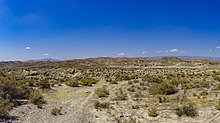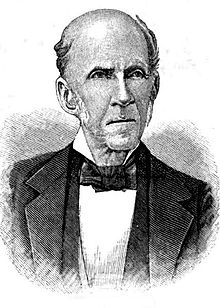Free Republic of Noundures
Free Republic of Noundures República Lliure de Noundures | |
|---|---|
Motto: Resistència, Alliberament, Patriotisme Resistance, Liberation, Patriotism | |
| Status | Semi-recognized breakaway state |
| Capital | Olèrdola |
| Largest city | Modica |
| Official language | Salvadoran |
| Ethnic groups (2020) |
|
| Religion | Creeperian Catholicism (official) |
| Demonym(s) | Noundurian |
| Government | De jure presidential republic under a de facto military dictatorship |
| Malaquies Llorca Caparrós | |
| Vícenç Tenas Daya | |
| Amèric Perarnau Agué | |
| Legislature | National Legislative Junta |
| De facto independence from Salisford | |
• Declaration of Independence | 10 July 1933 |
| Population | |
• 2020 estimate | 3,157,000 |
| GDP (nominal) | 2020 estimate |
• Total | ₵6.6 billion credits |
• Per capita | ₵2,084 credits |
| HDI (2021) | low |
| Currency | Salvadoran pesetaa (SPS) |
| Time zone | AMT–5 (HES) |
| Driving side | right |
| Calling code | +501 |
| |
Noundures (Salvadoran pronunciation: [nownˈdu.ɾɛs]), officially the Free Republic of Noundures (Salvadoran: República Lliure de Noundures), and formerly known as the State of Noundures (Estat de Noundures), is a semi-recognized breakaway state located in Sur whose territory is internationally recognized as a part of Salisford. The state is landlocked and located in the northern Salvadoran Valley, being bordered by Salisford in the north and El Salvador in the south. El Salvador is the only nation to formally recognize Noundures; Creeperopolis formerly recognized the breakaway state from 1961 until the signing of the Rubicon Agreement in 1976.
On 10 July 1933, the State of Granada invaded the Modica Strip on its northern border, beginning the Desert War. The Granadian government proclaimed the establishment of the State of Noundures as a breakaway state in the Modica Strip with the intention of eventually unifying the two states together. After the fall of the Granadian government in 1935 and the overthrow of President Adalbert Boronat Cruilles, however, all plans to unify El Salvador and Noundures were abandoned, and Noundures lost all support from the new Salvadoran government due to its previous support by the Granadians. In 1944, Noundurian President Llorenç Bataller Zúrich unified the four rebel groups fighting against the Salisfordian government into the Free Noundurian Army (ENL).
The Free Noundurian Army continued to independently fight the Salisfordian government until 1961, when the governments of Creeperopolis and El Salvador began to support the Noundurian government due to the beginning of the Rubicon War between Creeperopolis and Salisford. President Josep Esteba Treserra oversaw increased military operations in the Modica Strip throughout the war from 1961 to 1976, but Noundures never succeeded in fully controlling the area. Since the end of the Rubicon War, the Free Noundurian Army and Salisfordian government mostly engaged in skirmishes and light conflict, and the Noundurian government's control over the Modica Strip have mostly been limited to the mountains, areas near the Salvadoran border, and large settlements with a majority Salvadoran population.
The existence of the Free Republic of Noundures has caused serious tension between the governments of El Salvador and Salisford, which have disputed the location of the border in the Salvadoran Valley ever since the end of the Great Surian War in 1844. The Salvadoran government continues to recognize the independence of Noundures and allegedly continues to support the Free Noundurian Army, despite the fact that both El Salvador and Salisford are full members of the Cooperation and Development Coalition (CODECO).
Contents
Etymology

The Free Republic of Noundures is named after the Noundures Desert, in which the majority of the state's territorial claim is located. The name "Noundures" is derived from Nou Hondures, which is the Salvadoran form of the Creeperian name given to the Salvadoran Valley: Nuevo Honduras. Honduras was the name of a kingdom which existed in the 13th and 14th centuries until it was annexed by Creeperopolis. The origins of the name "Honduras" is unknown.
Before the state's declaration of independence, its leaders considered adopting the names "Northern Salvador" (Nord Salvador) or "New Salvador" (Nou Salvador), but ultimately decided against it for unknown reasons. The name "Olèrdolian Republic" (República Olèrdoliana) was also considered, and was used to some extent in the early years of the state's existence, but it fell our of favor after 1935. It was initially named the "State of Noundures" until a coup d'état in 1935 which renamed the country to the "Free Republic of Noundures". Until 1935, it was also sometimes referred to as the "People's Republic of Noundures" as it was ruled by a far-left government during the period from 1933 to 1935.
History
19th and 20th century Salvadoran irredentists
The Kingdom of El Salvador had existed in the Salvadoran Valley since its establishment by King Josep I in 1680. El Salvador has engaged in several skirmishes against the Kingdom of Salisford throughout the 1700s over the exact location of the border in the Altari Mountains. As a result of the two kingdom's disputes, El Salvador joined the Great Surian War on the side of the Kingdom of Castilliano in 1836 in the hopes of solidifying the border in their favor. The war ended in a Salisfordian victory, however, and as a part of the Treaty of Rubicone which ended the state of war between El Salvador and Salisford, El Salvador was forced to concede large sections of territory east and south of the Altari Mountains to Salisford on 15 January 1844.

Salvadoran irredentists sought to regain the territory ceded to Salisford, but their efforts were completely undermined by the Creeperian conquest of the country in 1858, upon which El Salvador was reorganized into the Captaincy General of Nuevo Honduras, a military-governed territory of Creeperopolis. Many Salvadorans who sought the restoration of an independent El Salvador also called for the return of all lands ceded by the Treaty of Rubicone. Salvadoran independence was restored in 1888 following a plebiscite which abolished military rule, abolished the monarchy, and established a republic. The country declared its independence on 1 November 1888 with Lluís Altayo Ramió of the Party of the Salvadoran People (PPS) being elected as the country's first president.
Before his election as president of El Salvador, Altayo Ramió was born and lived in Olèrdola, and the annexation of the city into Salisford forced him and his family to relocate to Sonsochapan. Altayo Ramió was an outspoken advocate of the return of what he called the "Modica Strip", or the northernmost portion of the Noundures Desert which was controlled by Salisford, and the "Maspujols Strip", the easternmost portion of the desert controlled by Salisford, back to El Salvador unconditionally. He lost reelection in 1894 to Esdres Fontcuberta Lacruz of the Salvadoran Nationalist Party (PNS), but he soon reelected in 1900 after accusing Fontcuberta Lacruz of "not being a true Salvadoran nationalist" and for not demanding the return of the Modica and Maspujols strips.
In 1901, Altayo Ramió issued his manifesto regarding his Salvadoran irredentist views. Titled "On the Restoration of the Fatherland", his manifesto outlined his vision for the incorporation and development of the Modica and Maspujols strips, and his manifesto became exceptionally popular among Salvadorans living within Salisford. Altayo Ramió offered to host Salisfordian leadership in Ciutat dels Àngels to negotiate the return of Salisfordian lands in the Noundures Desert to El Salvador, but Salisford refused to send a delegation as it viewed the terms of the Treaty of Rubicone as "decided" and "unchangeable".
After Altayo Ramió's death in 1910, his successors continued to attempt to negotiate with Salisford, but every time, Salisford refused to enter any negotiations regarding the status of their territories in the Noundures Desert. In 1926, President Gonçal Montanya Llavallo was deposed by the Junta of National Reorganization which abolished the government system established by Altayo Ramió in 1908. The coup's leader, Brigadier Alfons Manonell Desplans, denounced the ideologies of Altayo Ramió and his successors, and many believed that the Salisfordian government played a role in the coup to remove a Salvadoran government it viewed as hostile towards its territorial integrity. Neither of Manonell Desplans' successors, Adalbert Espasí Masrramon and Josep Boixadé Callo, made any demands from Salisford to return land in the Noundures Desert.
Declaration of independence from Salisford
On 4 January 1933, the government of Boixadé Callo was overthrown by leftist rebels who installed Tomàs Regalat Esglaó as the country's president. Regalat Esglaó changed the country's name to the State of Granada and sided Granada with the National Council for Peace and Order (CNPO) in the unfolding Creeperian Civil War. With Regalat Esglaó in power, the Party of the Salvadoran People returned to power for the first time since 1926 and pushed for Regalat Esglaó to attempt to reclaim "integral Salvadoran territory" in the Noundures Desert by force in the midst of the Salvadoran War against right-wing insurgents supported by the Catholic Imperial Restoration Council (CRIC).

The Granadian military organized a military force, the Noundurian Liberation Front (FAN), in mid-1933 for a planned invasion of the Modica Strip. On 10 July 1933, the Granadian military invaded the Modica Strip with the goal of capturing it in its entirety. The invasion's leader, General Adalbert Boronat Cruilles, declared the establishment of the State of Noundures as an independent state, claiming the Modica Strip in its entirety. He declared himself as Noundures' first president and declared himself as the cabdill of all Granadian and Noundurian forces in the Modica Strip.
Granada's invasion into the Modica Strip was initially successful, capturing large amounts of territory from Salisford as there was a minimal military presence in the area. Olèrdola was captured on 31 July 1933 and was declared as the state's capital city. The Granadian advance was stalled at the city of Tovela, however, where Salisfordian soldiers defeated the Granadians in battle on 20 August 1933 and eventually pushed them back to 15 miles south of the city.
Insurgency from the 1930s to 1950s
Fighting during the Rubicon War
Post-Rubicon War era
Geography
Government
Government structure
 |
|---|
| This article is part of a series on the politics and government of the Free Republic of Noundures |
Officially, the Free Republic of Noundures is a presidential republic. The state holds elections for the presidency every six years, however, the elections are widely considered to be fraudulent by the international community, and they are not recognized by the Salisfordian government. Every president has been a member of the country's military or one of the four rebel groups which later merged into the military, and every president, except Boronat Cruilles, has been a member of the state's sole legal political party: the Movement for Noundurian Integration (MIN).
Military organization
Administrative divisions
International recognition
Demographics
Population
Ethnicity
Religion
Economy
Culture
Sports
Association football is the most popular sport in the Free Republic of Noundures. It is represented internationally by the Noundures national football team, however, it has only played matches against Creeperopolis, El Salvador, the State of the Church, and the teams of other states with limited recognition. Noundures maintains a domestic league, the Lliga de Futbol A, with eight clubs since 1978, but its clubs have never competed in an international tournament organized by CONFUSUR.
Holidays
See also
- Articles with short description
- Use dmy dates from November 2022
- Use Jackian from November 2022
- All LCNWiki articles written in Jackian
- Pages using infobox country or infobox former country with the flag caption or type parameters
- Pages with broken file links
- Free Republic of Noundures
- Creeperopolis
- Creeperopolis RP
- Creeperopolis Terraconserva
- Salisford
- Terraconserva






